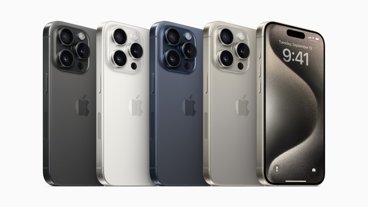Pre-CDMA iPhone 4, 28% of Motorola's phone sales were on Verizon
More than a quarter of Motorola Mobility Holdings Inc.'s revenue in 2010 came from sales on Verizon's network, according to a new report filed Friday by Bloomberg. Verizon has played an increasingly important role with Motorola, as the handset maker saw 13 percent of its revenue from the carrier in 2008, and 17 percent in 2009.
Motorola is one of the premier Android device makers, ushering in the "Droid Does" marketing campaign with Motorola in 2009 with the launch of the first Motorola Droid.
Motorola's important relationship with Verizon was detailed in a regulatory filing made on Friday. In it, the Illinois company also indicated that a significant loss of revenue from Verizon "could have a negative impact on our business."
The details underscore the belief that Apple's end of iPhone exclusivity in the U.S. and decision to align with Verizon is strategic. Wall Street analyst Gene Munster with Piper Jaffray has estimated that Verizon accounts for roughly 20 percent of all Android users worldwide.
One rumor this week suggested that both Apple and Verizon are disappointed by launch sales of the CDMA iPhone 4, after it became available at retail on Feb. 10. That report also claimed that 30 percent of Verizon iPhone buyers were Android users switching to Apple's handset.
However, a Verizon spokesperson contradicted that report, and said the company was pleased with initial sales. No sales figures for the Verizon iPhone 4 have been released yet.
More likely, the real test for Android handsets on Verizon for device makers like Motorola will come when the so-called "iPhone 5" launches, expected around Apple's annual June timeframe. Then, both AT&T and Verizon — the two largest carriers in the U.S. — could potentially have a simultaneous launch of the new device.
 Sam Oliver
Sam Oliver










 Malcolm Owen
Malcolm Owen
 Chip Loder
Chip Loder

 William Gallagher
William Gallagher
 Christine McKee
Christine McKee
 Michael Stroup
Michael Stroup
 William Gallagher and Mike Wuerthele
William Gallagher and Mike Wuerthele







